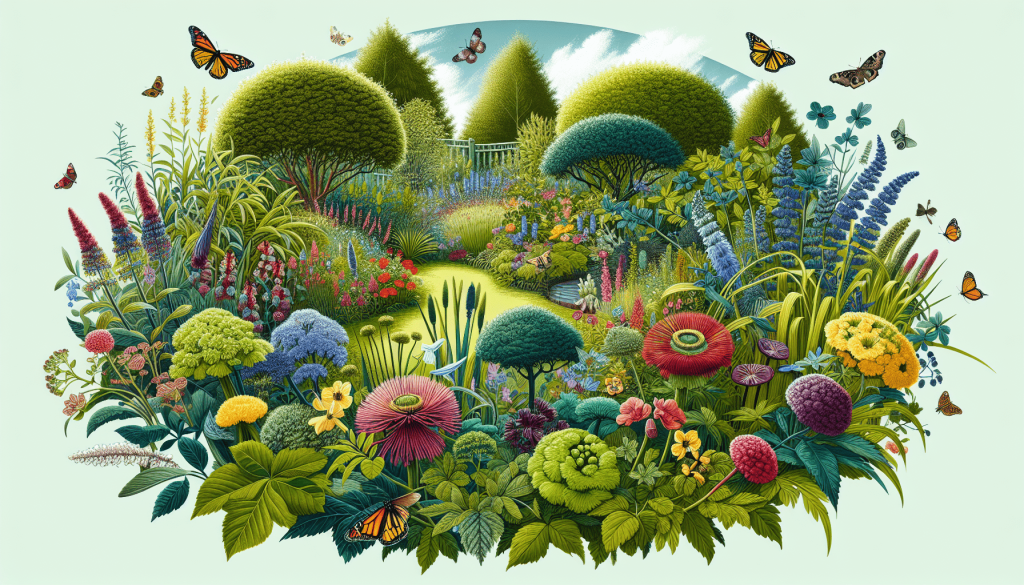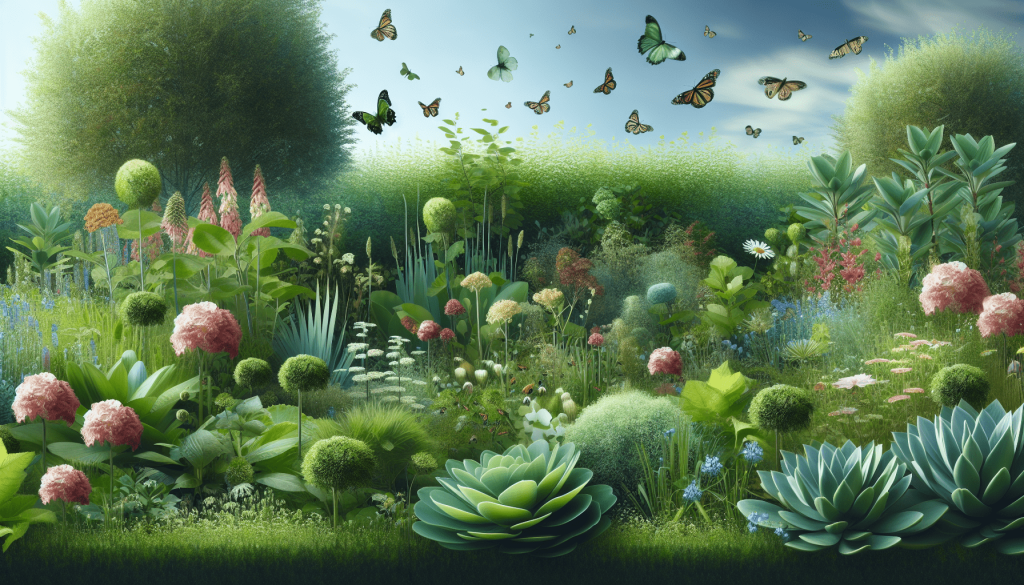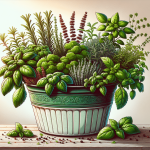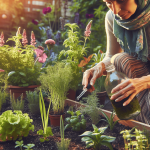This post may contain affiliate links. As an Amazon Associate, we may earn commissions from qualifying purchases.
What are the benefits of planting native species in your garden? This may be a question you’ve pondered if you’re considering enhancing your outdoor space. Gardening with native plants not only helps to preserve the local ecosystem, but it can also provide a thriving habitat for wildlife while reducing maintenance efforts. In times where environmental sustainability is increasingly important, planting native species has gained recognition as a meaningful practice.
Understanding What Native Species Are
To appreciate the benefits, it’s key to understand what native species are. Native plants are those that naturally occur in a particular region or ecosystem without human introduction. They have evolved over thousands of years to adapt to the specific climate and conditions of their region, making them a practical choice for gardeners.
Differences Between Native and Non-Native Plants
It helps to distinguish between native and non-native plants. Native plants have evolved without human intervention and are part of the natural landscape. Non-native or exotic plants, on the other hand, have been introduced from other locations and may not adapt as seamlessly to local conditions, potentially requiring more resources.
Why Native Species Matter
Native species play a crucial role in maintaining biodiversity. They provide food and habitat for local wildlife, including insects, birds, and other animals. This intricate relationship helps sustain food chains and other natural processes essential for environmental health.
Benefits of Planting Native Species
There are numerous advantages to incorporating native plants into your garden. These advantages not only benefit you but also contribute to a healthier, more sustainable environment.
Environmental Benefits
-
Supports Local Ecosystems: Native plants are integral to local ecosystems. By planting them, you create a supportive environment for native wildlife, fostering biodiversity.
-
Adaptation to Local Climate: These plants are accustomed to your area’s climate, soil, and precipitation. They thrive with minimal intervention and watering once established.
-
Pest and Disease Resistance: Native plants are generally more resistant to pests and diseases common in your region. This means reduced need for chemical interventions, promoting a healthier environment.
Economic Benefits
-
Reduced Maintenance Costs: Native plants often require less maintenance. Since they are adapted to the local conditions, you spend less on water, fertilizers, and pest control.
-
Increased Property Value: A well-maintained native garden can enhance the aesthetic appeal and value of your property. It’s a cost-effective way to beautify your space while being environmentally conscious.
-
Saves Time: With less watering and fewer fertilizers, you save time on garden upkeep, freeing up your schedule for other activities.
Sociocultural Benefits
-
Preserving Heritage: Planting native species helps preserve local flora heritage, maintaining the biological identity of an area.
-
Community Building: Native gardening can build a sense of community. Shared knowledge and plants can bring neighbors together for a common cause of sustainability.
-
Educational Opportunities: Your garden can serve as a living classroom, providing educational opportunities about local plants and ecosystems to family, friends, and local schools.
Aesthetic Benefits
Native plants also offer aesthetic benefits. They provide a connection to the natural beauty of your region, often leading to a garden that looks more natural and harmonious.

How to Get Started with Native Plant Gardening
Starting your native plant garden might seem daunting, but it can be a rewarding endeavor with long-lasting benefits. Here’s how you can begin:
Research Your Local Flora
Understand the types of native plants that grow in your area. This involves researching your region’s climate, soil type, and typical native plant species. Resources like local botanical gardens, extension offices, or plant societies can be invaluable for this research.
Designing Your Garden
Plan your garden layout while considering plant height, flowering seasons, and sunlight requirements. Designing with biodiversity in mind means strategically placing plants to create layers for different species and maximizing the habitat’s usefulness.
Acquiring Plants
When obtaining native plants, purchase from reputable local nurseries or attend plant swaps organized by native plant societies. This ensures the plants have been ethically sourced and helps support local businesses.
Planting and Maintenance
Follow proper planting techniques to ensure your native plants thrive. Once established, native plants often need little maintenance. However, initial care, like weeding and watering, is crucial for helping plants become well-rooted.
Common Native Plant Options by Region
For effective gardening, it’s beneficial to consider common native plant options specific to your area. Here’s a general guide for selecting native plants across various regions:
| Region | Example Native Plants |
|---|---|
| Northeast USA | Red Maple, Blueberry, Eastern Redbud |
| Southeast USA | Live Oak, Southern Magnolia, Coreopsis |
| Midwest USA | Purple Coneflower, Prairie Dropseed |
| Southwest USA | Desert Marigold, Chia, Agave |
| West Coast USA | California Poppy, Douglas Fir, Manzanita |
| Tropical | Hibiscus, Bamboo, Bougainvillea |
Each plant in this guide is generally well-suited to its respective climate, offering reliability for those new to native gardening.

Overcoming Challenges
Like any gardening, planting native species involves overcoming challenges. Here’s how you can manage some of these:
Invasive Species Management
A significant challenge is dealing with invasive species that can overwhelm native plants. Identifying and responsibly removing invasive plants ensures your native garden thrives.
Community Concerns
Sometimes native landscapes may raise aesthetic concerns in communities used to manicured lawns. Educating neighbors and highlighting the benefits can help foster wider acceptance.
Availability and Access
Another challenge can be accessing native plants. Limited availability in commercial nurseries can be a hurdle, but community plant swaps and specialized nurseries are excellent alternatives.
Sustainable Gardening Practices
Pairing native planting with sustainable gardening practices amplifies the benefits. Here are some practices to consider:
Water Conservation
Native plants naturally conserve water, but implementing rainwater harvesting and using mulch further reduces water usage.
Organic Gardening
Using organic techniques, such as composting and avoiding chemical pesticides, enhances the health of your garden and local ecology.
Soil Health Management
Maintaining soil health is vital. Incorporate cover crops and minimize soil disturbance to foster a thriving soil ecosystem that benefits your native plants.
Inspiring Stories of Native Plant Gardens
Hearing success stories can motivate and inspire your gardening journey. Examples of communities transforming landscapes using native plants reveal their potential impact.
Community Garden Initiatives
Many urban areas are converting underutilized spaces into native plant gardens, creating green havens in concrete environments. Community projects can revitalize neighborhoods and provide collaborative opportunities.
Wildlife Sanctuary Transformations
Some homeowners have transformed their gardens into mini-wildlife sanctuaries, attracting diverse species and creating a tapestry of life using native plants. These gardens become a refuge for pollinators and other wildlife.
Conclusion
Incorporating native species in your garden provides multifaceted benefits. From environmental enhancement and economic savings to cultural enrichment and community building, the reasons to plant native species are compelling. By understanding your local flora, designing thoughtfully, and practicing sustainable gardening, you can create a vibrant and flourishing garden that reflects the natural beauty of your region. Start small, and let your native garden grow into a source of pride and a symbol of ecological responsibility. The positive impact on your environment, wallet, and well-being will be well worth the effort. Happy planting!








